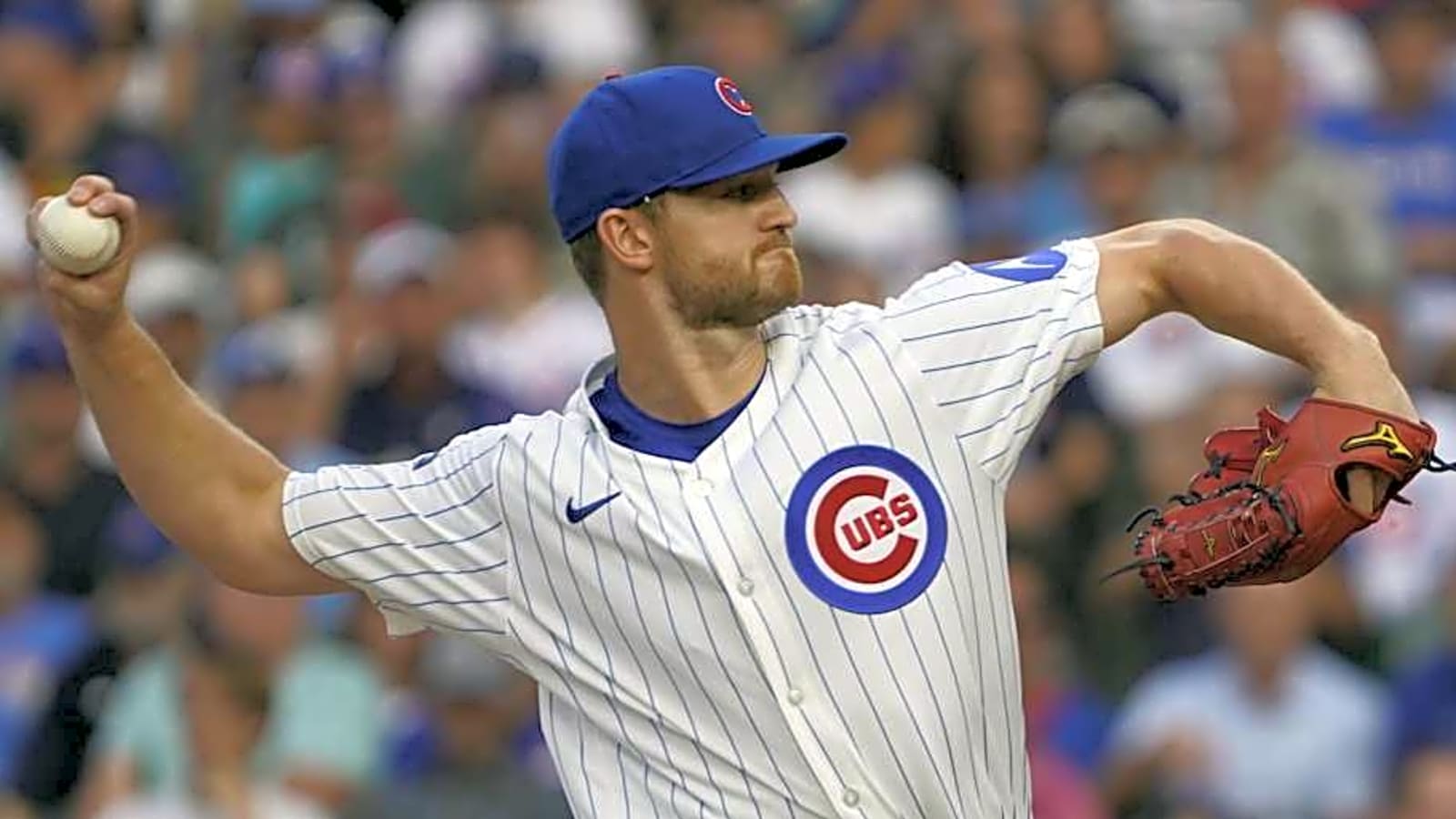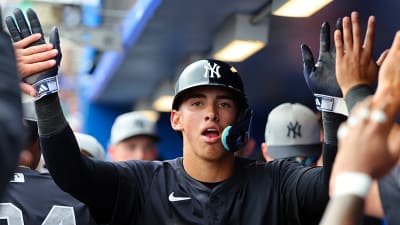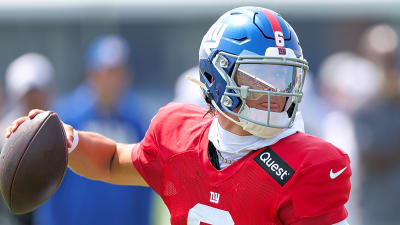
The Chicago Cubs' underwhelming trade deadline just got worse.
In a 3-2 loss to the Cincinnati Reds on Monday, which dropped the Cubs three games behind the Milwaukee Brewers for first place in the National League Central division, starting pitcher Michael Soroka exited after just two innings due to right shoulder discomfort. After the game, manager Craig Counsell said Soroka will go to the injured list.
The Cubs acquired Soroka, a 28-year-old right-hander, in a trade with the Washington Nationals on Wednesday in exchange for infielder Ronny Cruz and outfielder Christian Franklin, Chicago's No. 13 and 14 prospects, respectively.
In the moment, the trade appeared to give the Cubs depth at the end of their starting rotation, as Soroka had a 4.87 ERA, 1.13 WHIP and ranked in the 85th percentile in expected batting average against across 16 starts with the Washington Nationals. But as the trade deadline passed, and the Cubs failed to make big move for a frontline starting pitcher, Soroka's importance heightened on a pitching staff with Justin Steele, Jameson Taillon and Javier Assad on the injured list.
The early stages of his Cubs debut looked promising, retiring five of the first six batters with three strikeouts. But things quickly went downhill, as Reds catcher Tyler Stephenson hammered Soroka's slurve for a solo home run in the second inning. He'd face just one more batter.
"Just went to go put a little extra on a fastball, and it grabbed me a little bit and didn't go away," Soroka said postgame, per Marquee Network. "That's kind of –– you feel things here and there during the course of an outing, and usually if you throw another one and it's gone, it's nothing. Unfortunately, that wasn't the case. So I decided to say something when I came in after that inning, and they moved along."
Michael Soroka explains his exit from today’s game after the 2nd inning. pic.twitter.com/EArWvaDr3r
— Marquee Sports Network (@WatchMarquee) August 5, 2025
While Soroka's early exit came as a surprise initially, his last few starts revealed a concerning trend. A four-seam fastball that averaged 94.4 mph and topped out at 97.3 mph in his June 17 start against the Rockies steadily decreased over the following weeks. On Monday, it averaged 90.8 mph and maxed out at 91.7 mph.
Here's a look at Soroka's maximum, average and minimum four-seam fastball velocity across his last nine starts –– one with the Cubs and eight with the Nationals –– according to Baseball Savant.
A decrease in fastball velocity sometimes suggests an injury, and clearly Soroka knew something wasn't right. He received an MRI before making what turned out to be his final start with the Nationals on July 29, according to Sahadev Sharma of The Athletic.
“That’s kind of what we did for my peace of mind before my outing against the Astros,” Soroka said, per The Athletic. “We looked at some avenues mechanically, some other things as to where the velocity went. We decided to check that other box off and there was nothing that presented to be an issue at the time there."
“I didn’t have any discomfort, I didn’t have any pain. There was no reason to believe there was anything wrong. We cleared that. Unfortunately, that changed a little bit in the second inning today.”
Despite Soroka's confidence that nothing was wrong, it's still surprising that he represented the Cubs' one and only move for a starting pitcher at the trade deadline. Cubs president of baseball operations Jed Hoyer has been careful about medical history in the past, nixing a trade in the offseason with the Marlins for pitcher Jesus Luzardo.
Hoyer must have been aware of Soroka's MRI and decreased velocity –– all players have to be cleared medically for trades to go through –– which makes it all the more befuddling that he still made the move. Soroka was also on the injured list in April with a right biceps strain. Taking a risk like that is not typically how he operates.
Even if Hoyer was willing to take a chance on Soroka, why didn't he give himself some insurance and trade for another starting pitcher? It's somewhat understandable to decide against mortgaging the future by selling off top prospects like Owen Caissie, Moises Ballesteros or Matt Shaw. After all, that's what the rest of the league decided, too, as top starting pitchers like MacKenzie Gore, Joe Ryan, Mitch Keller, Zac Gallen, Sandy Alcantara, Edward Cabrera all stayed put past the deadline.
But to not make a move for a second lower-level starter –– even if Soroka had stayed healthy –– left little margin for error. White Sox general manager Chris Getz said Thursday that he and the Cubs discussed a trade involving Adrian Houser, who had a 2.10 ERA in 11 starts with the White Sox, but the Tampa Bay Rays' made a better offer.
All Houser cost the Rays was infielder Curtis Mead, who's been great in the minor leagues but struggled in the majors, and pitching prospects Duncan Davitt and Ben Peoples, both of whom were ranked outside the Rays' top-30 prospects.
That's a move the Cubs could have pushed harder to make without giving away top prospects, and the starting rotation would be in a much better spot. Instead, Soroka joins Taillon, Steele and Assad on the injured list, leaving the Cubs with a rotation of Shota Imanaga, Matthew Boyd, Cade Horton, Colin Rea and uncertainty in the fifth spot.
Hoyer improved the Cubs bullpen by trading Andrew Kittredge and Taylor Rogers, and utility man Willi Castro fits the roster well. But only adding Soroka to the rotation appeared inadequate at the time, and it looks even worse as the Cubs chase the Brewers without him.
More must-reads:
- AL Cy Young Award is Tarik Skubal's to lose after duds from Garrett Crochet, Nathan Eovaldi
- Yankees slugger Aaron Judge lands at No. 1 on prestigious list
- The 'American League WAR leaders' quiz
Breaking News
Trending News
Customize Your Newsletter
 +
+
Get the latest news and rumors, customized to your favorite sports and teams. Emailed daily. Always free!








